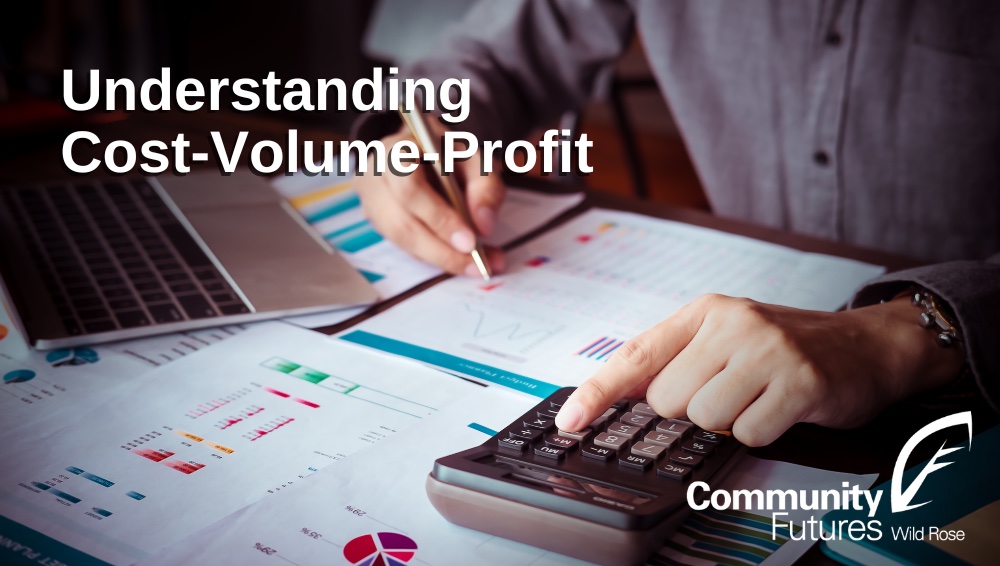Cost-Volume-Profit (CVP) analysis is a valuable tool for small business owners. It empowers them to make informed decisions about pricing, production levels, and overall profitability. In this article, we break down CVP analysis in simple terms, explain its relevance to your business, and provide practical insights on how to apply it effectively.
What is Cost-Volume-Profit (CVP) Analysis?
CVP analysis is a financial management tool used to determine how changes in sales volume and costs affect an organization's profitability. It helps you understand the relationship between costs, revenue, and profits at different levels within your business.
Key Components of CVP Analysis
1. Break-even Point: One of the fundamental concepts in CVP analysis is determining the break-even point. This is the point where your sales exactly cover your costs. Every sale you make after the break-even point contributes to profit.
As a business, knowing your break-even point is crucial as it helps you set sales targets and pricing strategies necessary to cover your costs and start generating profits.
To calculate the break-even point, you'll need:
- Fixed Costs: Costs that remain constant regardless of sales volume (e.g., rent, salaries).
- Variable Costs: Costs that vary with changes in sales volume (e.g., raw materials, direct labour).
- Selling Price per Unit: The price of your product or service.
To learn more about calculating your break-even point, read our “Breakeven Analysis” blog. You can also download Business Link’s helpful Breakeven Analysis guide for free!
2. Contribution Margin: This is another critical concept in CVP analysis. The contribution margin lets you calculate how much each individual product contributes to the profit of your business. It's calculated as C=P-V

As an easy example, your business sells bumper stickers. You charge $8 for each bumper sticker. The cost of making these bumper stickers is $0.75 per sticker. The price per unit is $8 and the variable cost per unit is $0.75 (COGS). This means your contribution margin per bumper sticker is $7.25. Transaction and shipping costs may also be factors to consider.
By increasing the contribution margin through raising prices or reducing variable costs, you can improve profitability.
3. Profit Planning and Decision Making: CVP analysis helps you make strategic decisions related to pricing, production, and sales volume. By understanding how changes in these factors impact your profits, you can optimize your business operations. For example:
- Should you lower your selling price to increase sales volume?
- How will a reduction in variable costs affect your profit margins?
- What sales volume is required to achieve a target profit?
Applying CVP Analysis to Small Business
To better understand Cost-Volume-Profit, we return to our bumper sticker example. Sticky Art Co., a fictional bumper sticker company, has determined that their monthly fixed costs amount to $6,500. These fixed costs cover marketing, rent, insurance, and wage expenses. The production cost for each bumper sticker is $0.75, and the stickers are sold for $8 each, resulting in a profit (or contribution margin) of $7.25 per bumper sticker.
If we take the fixed cost of $6,500 and divide it by the contribution margin of $7.25, we know that Sticky Art Co. must sell approximately 897 bumper stickers each month to reach their break-even point. Knowing this, Sticky Art Co. can set its production and sales goals.
Now that you understand the basics of CVP analysis, here's how you can apply it to your small business:
- Pricing Strategy: Use CVP analysis to set optimal prices that cover your costs and generate desired profits.
- Production Planning: Determine the level of production needed to achieve profitability and avoid overproduction.
- Cost Control: Identify areas where you can reduce costs without compromising quality or customer satisfaction.
- Financial Forecasting: Forecast how changes in sales volume will impact your bottom line and plan accordingly.
- Scenario Analysis: Conduct "what-if" scenarios to assess the impact of different business decisions on profitability.
Caveats of CVP Analysis
While CVP analysis is a powerful tool, it makes several assumptions that may not always hold in the real world. These assumptions include:
- Constant Sales Price: CVP analysis assumes that the selling price per unit remains constant irrespective of changes in sales volume.
- Constant Variable Costs per Unit: It assumes that variable costs per unit remain consistent regardless of the production level.
- Fixed Costs Remain Unchanged: The analysis assumes that fixed costs remain constant over the relevant range of production and sales volume.
Understanding these assumptions is crucial because deviations from these assumptions can affect the accuracy of your CVP analysis results. Always validate your analysis with real-world data and be prepared to adjust your strategies based on changing market conditions.
Cost-Volume-Profit (CVP) analysis remains a powerful and practical tool for small business owners to make informed financial decisions and drive profitability. By mastering these concepts, understanding the assumptions, and applying them judiciously to your business, you'll be better equipped to navigate challenges and maximize success.
For 35 years, Community Futures Wild Rose has supported rural Alberta businesses with business planning, coaching, training, and financial support. Whether you're starting up, planning growth, or facing financial challenges, our specialists are here for you.
Schedule a FREE consultation with us at




